Jean Prouvé's 'Tropical Habitat for Cameroun' moves to Marseille
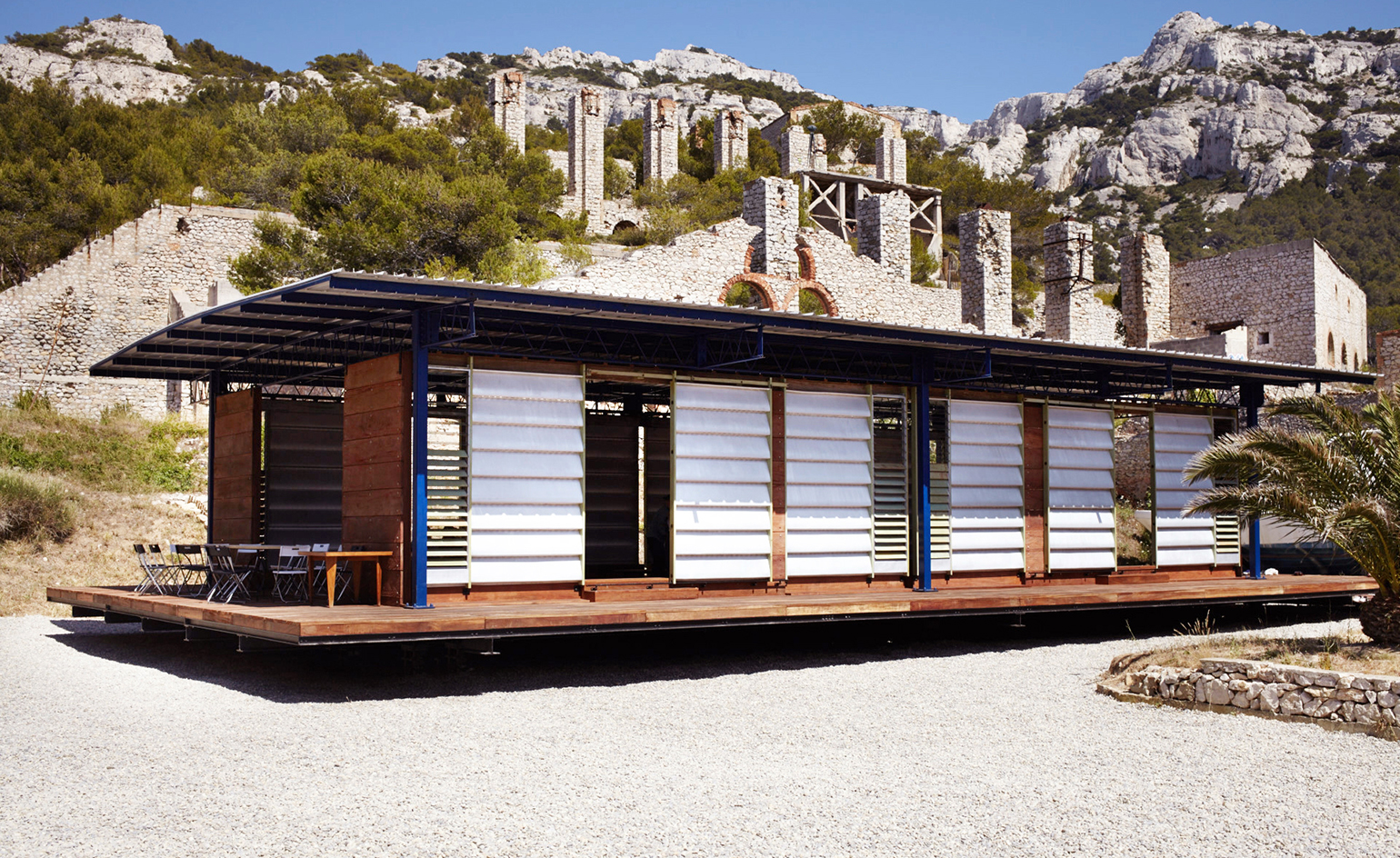
Éric Touchaleaume is a Paris-based antique collector with a profound attachment to Marseille and to Jean Prouvé. In 2011, he bought la Friche l'Escalette, a disused lead mine in the National Parc des Calanques south of Marseille. This unique industrial heritage site was the perfect backdrop to Touchaleaume's project: to create a private cultural park to share his passion for contemporary sculpture and Jean Prouvé's lightweight architecture. The park opens this summer with its key exhibit, Prouvé's 1958 steel-frame prototype of the 'Tropical Habitat for Cameroun'; the first time it's ever been exhibited.
Touchaleaume discovered the prototype by pure chance. He was travelling through Cameroon in search of one of the architect's tropical school buildings, where he crisscrossed the country for two months, only to find most of the structures derelict or demolished. Despondent, he was driving through the Yaoundé suburbs to see the German missions when he chanced upon some school buildings with their aluminium roofs still intact. One was slightly taller than the rest.
'I instantly recognised Prouvé's famous prototype with eight wave panels instead of the usual seven of the standard models. After some intense negotiation with the village chiefs, I was told it was all or nothing,' he recalls. 'I then became the proud owner of five Prouvé houses including the original prototype.'
Some were dismantled to provide parts to reconstruct the prototype following the archival blueprint. Posts, girders and purlins are made in Prouvé’s signature technique of folded sheet steel. For economy, the metal frame was replaced by locally sourced okan, an insect-repellant African teak so dense it has to be cut with a metal chainsaw.
The overhang of the parasol roof ensured protection from harsh sun and monsoon rains, while the space between the roof and the dropped ceiling combined with the perforated 'airplane wing' wall vents provide amazingly effective natural air conditioning, with the inside temperature up to 18°C cooler than outside – equally appreciated in the Mediterranean's summer heat.
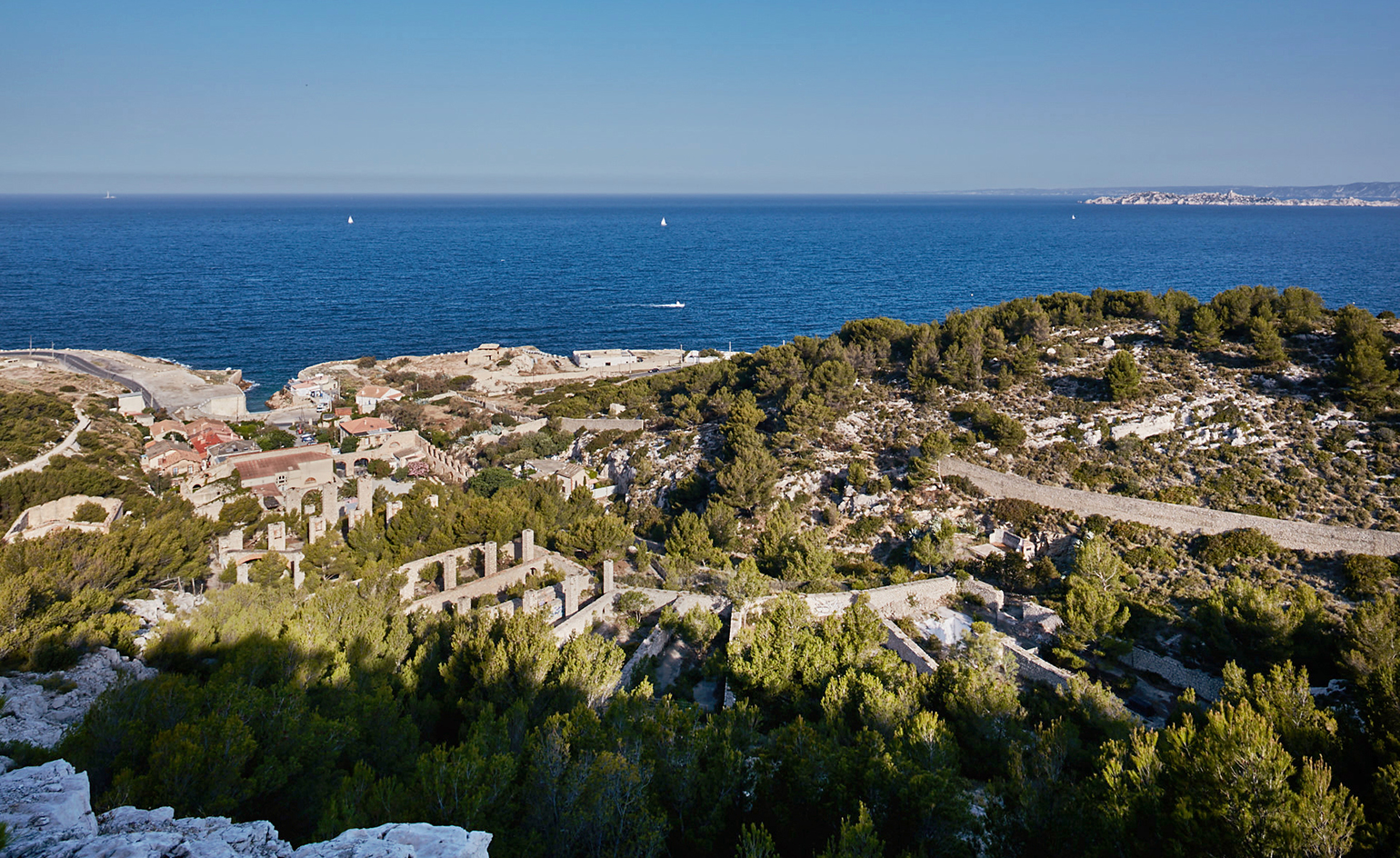
The installation's location is an industrial heritage site, called La Friche de l’Escalette; a disused lead-extracting plant that operated from 1851 to 1926 on Marseille's Route des Goudes
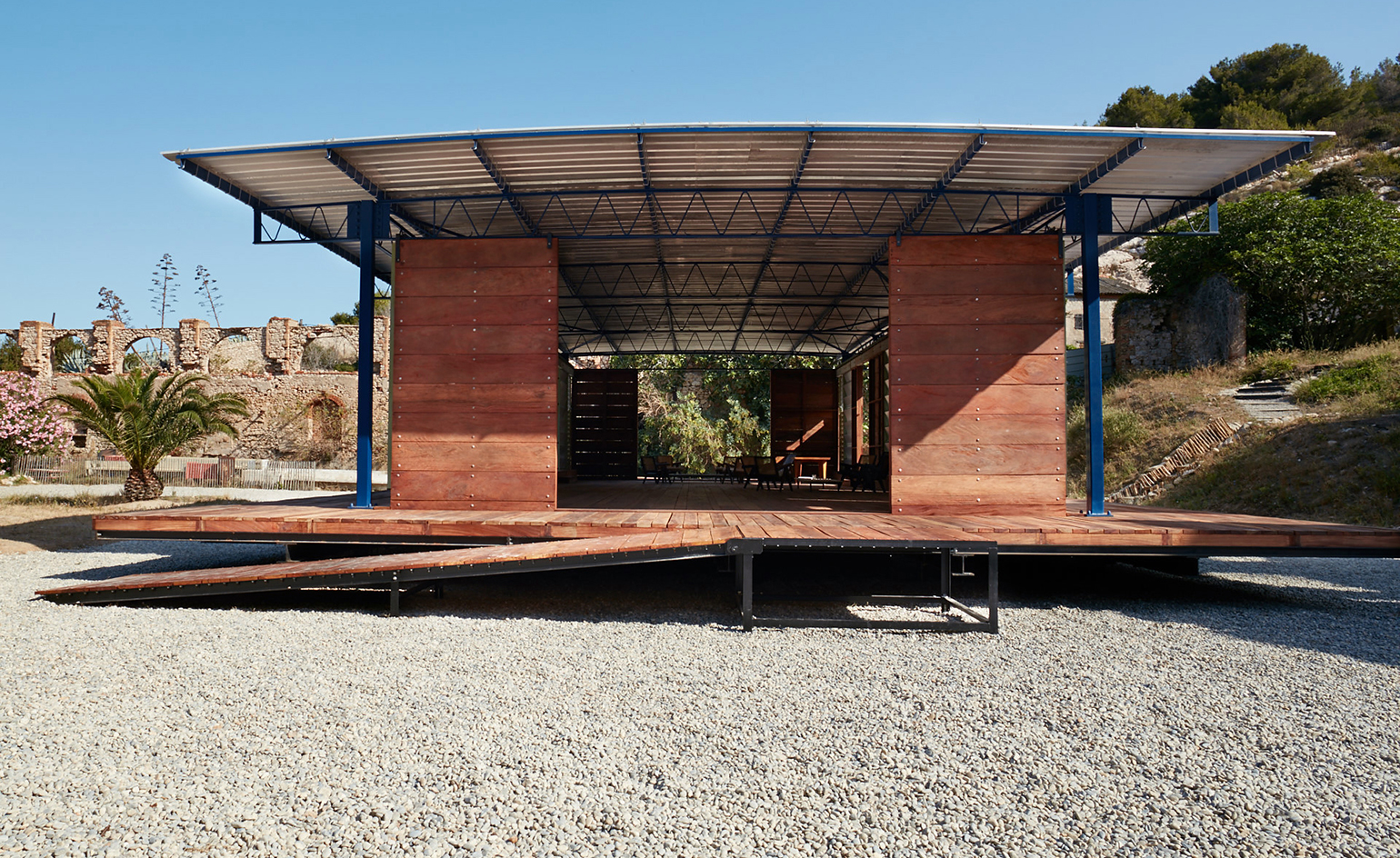
Touchaleaume discovered one of Prouvé’s original 'Tropical Habitat for Cameroun' houses during a trip to the African country

The architect's reconstructed prototype is now furnished with armchairs and a square table by Pierre Jeanneret, and a low table by Charlotte Perriand
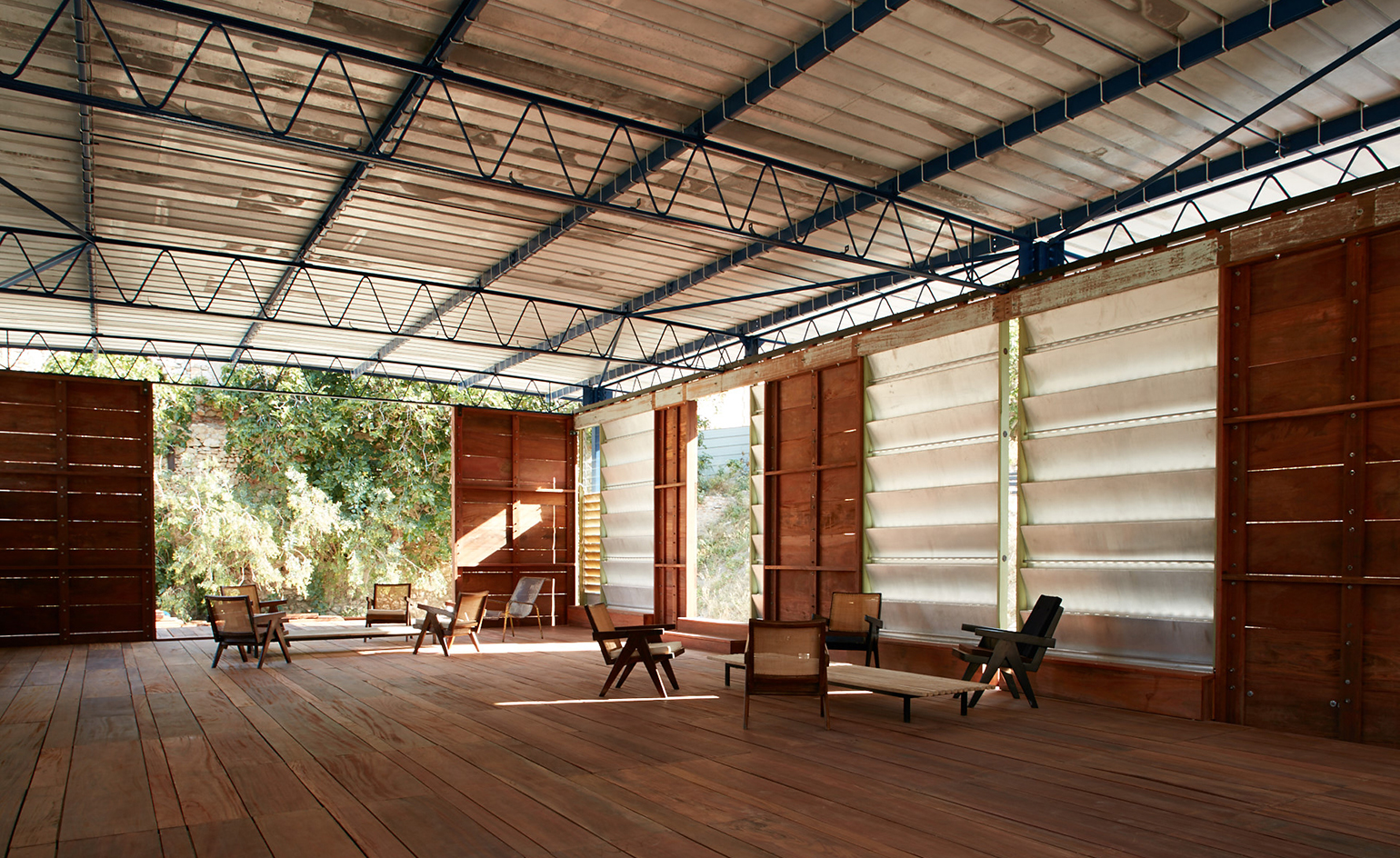
The furniture is drawn from Éric Touchaleaume's private collection

Artist Marjolaine Dégremont’s Touching the Sky is an installation created for the 'Tropical Habitat' installation's inauguration. The piece is situated in what was once the industrial site's crushing pit
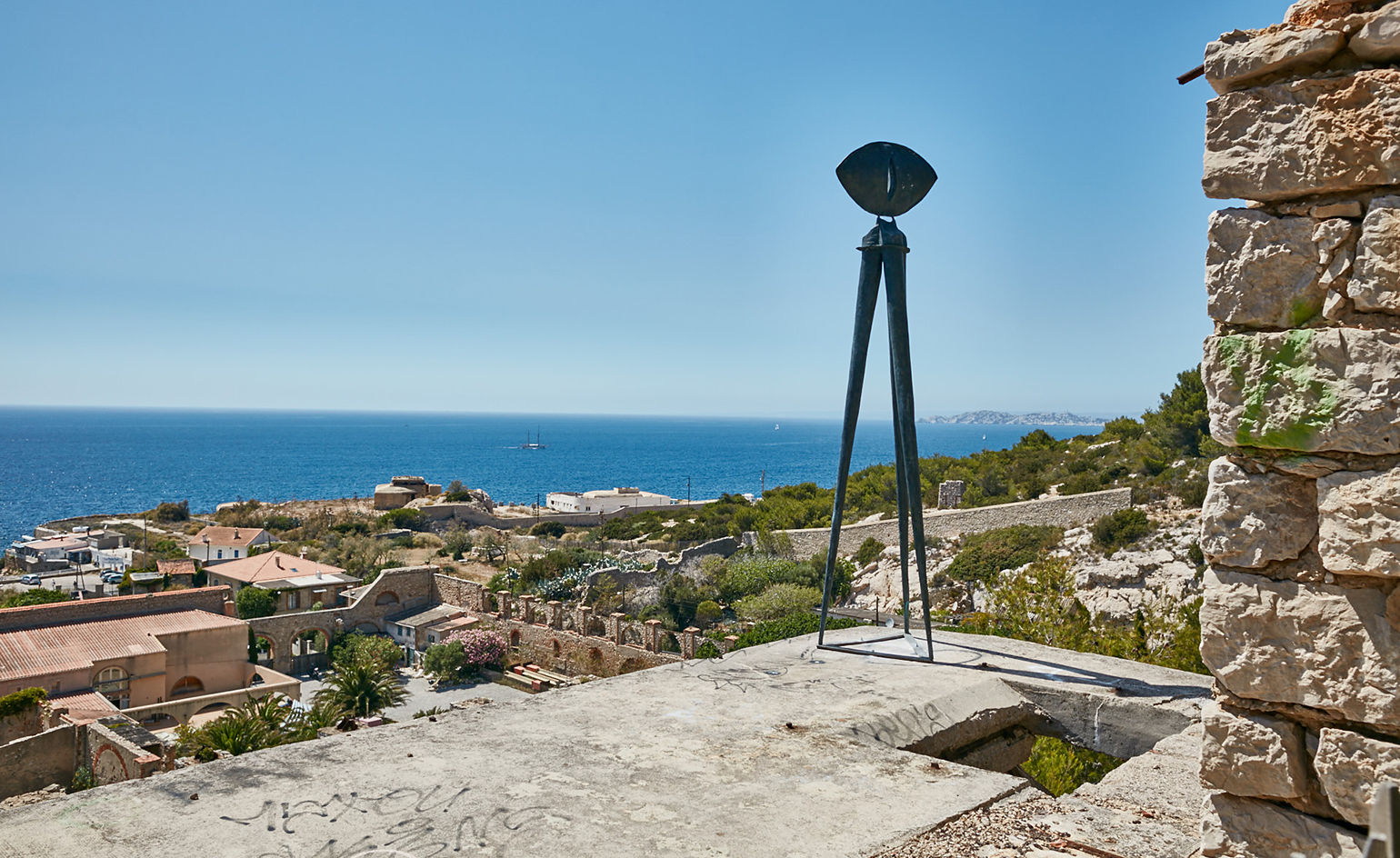
Dégremont also created the Cat's Eye sculpture in bronze, also on site
INFORMATION
Guided visits are available until 30 September, by reservation only. For more information, visit the Friche l’Escalette website
Photography: Michael DePasquale / Martina Maffini
ADDRESS
La Friche l'Escalette
Route des Goudes
Impasse de l'Escalette
13008 Marseille
Receive our daily digest of inspiration, escapism and design stories from around the world direct to your inbox.
-
 Can the film 'Peter Hujar's Day' capture the essence of the elusive artist?
Can the film 'Peter Hujar's Day' capture the essence of the elusive artist?Filmmaker Ira Sachs and actor Ben Whishaw bring Peter Hujar back to the front of the cultural consciousness
-
 New tech dedicated to home health, personal wellness and mapping your metrics
New tech dedicated to home health, personal wellness and mapping your metricsWe round up the latest offerings in the smart health scene, from trackers for every conceivable metric from sugar to sleep, through to therapeutic furniture and ultra intelligent toothbrushes
-
 Out of office: The Wallpaper* editors’ picks of the week
Out of office: The Wallpaper* editors’ picks of the week'Tis the season for eating and drinking, and the Wallpaper* team embraced it wholeheartedly this week. Elsewhere: the best spot in Milan for clothing repairs and outdoor swimming in December
-
 The Architecture Edit: Wallpaper’s houses of the month
The Architecture Edit: Wallpaper’s houses of the monthFrom wineries-turned-music studios to fire-resistant holiday homes, these are the properties that have most impressed the Wallpaper* editors this month
-
 This modernist home, designed by a disciple of Le Corbusier, is on the market
This modernist home, designed by a disciple of Le Corbusier, is on the marketAndré Wogenscky was a long-time collaborator and chief assistant of Le Corbusier; he built this home, a case study for post-war modernism, in 1957
-
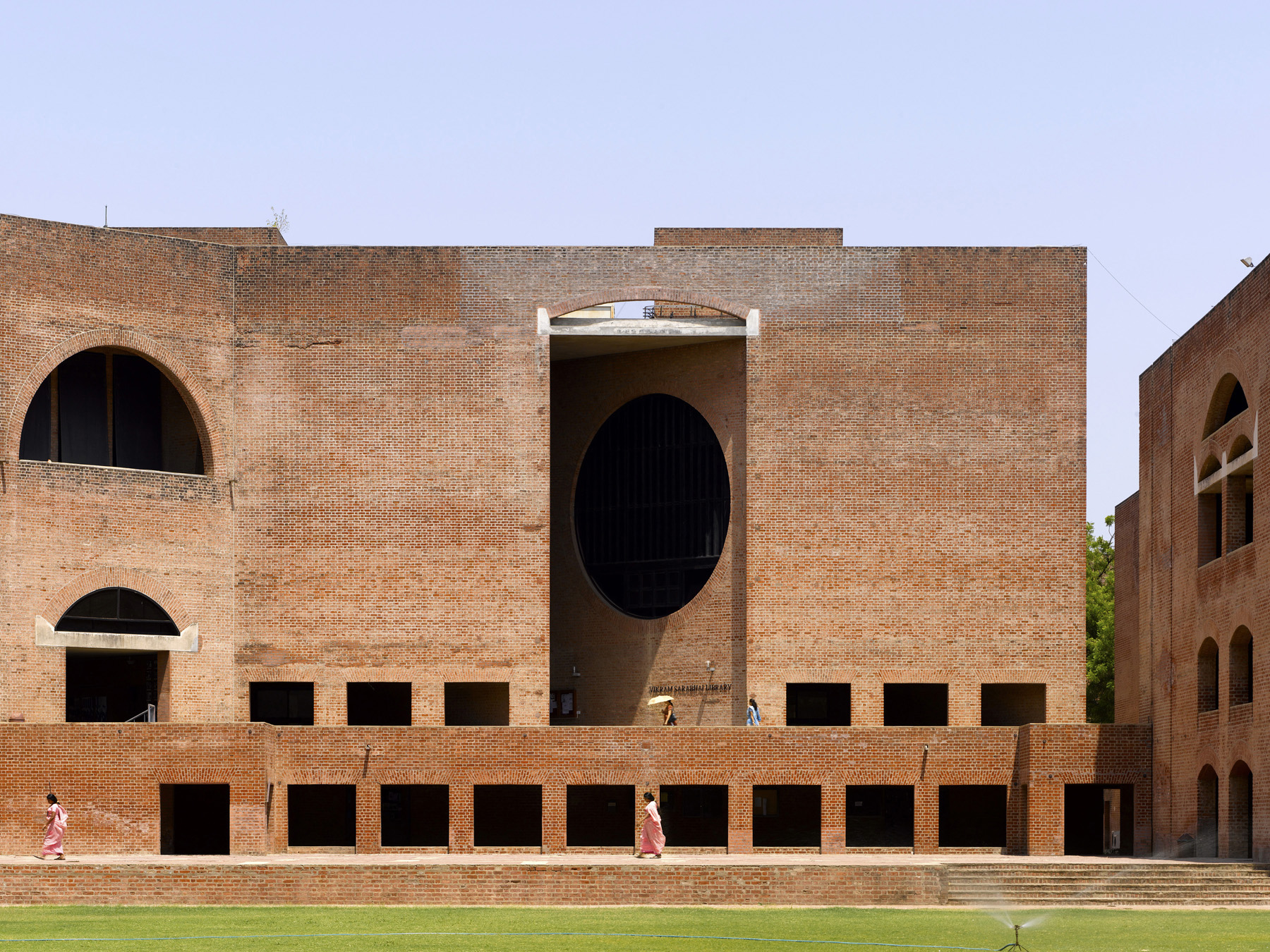 Louis Kahn, the modernist architect and the man behind the myth
Louis Kahn, the modernist architect and the man behind the mythWe chart the life and work of Louis Kahn, one of the 20th century’s most prominent modernists and a revered professional; yet his personal life meant he was also an architectural enigma
-
 The Architecture Edit: Wallpaper’s houses of the month
The Architecture Edit: Wallpaper’s houses of the monthFrom Malibu beach pads to cosy cabins blanketed in snow, Wallpaper* has featured some incredible homes this month. We profile our favourites below
-
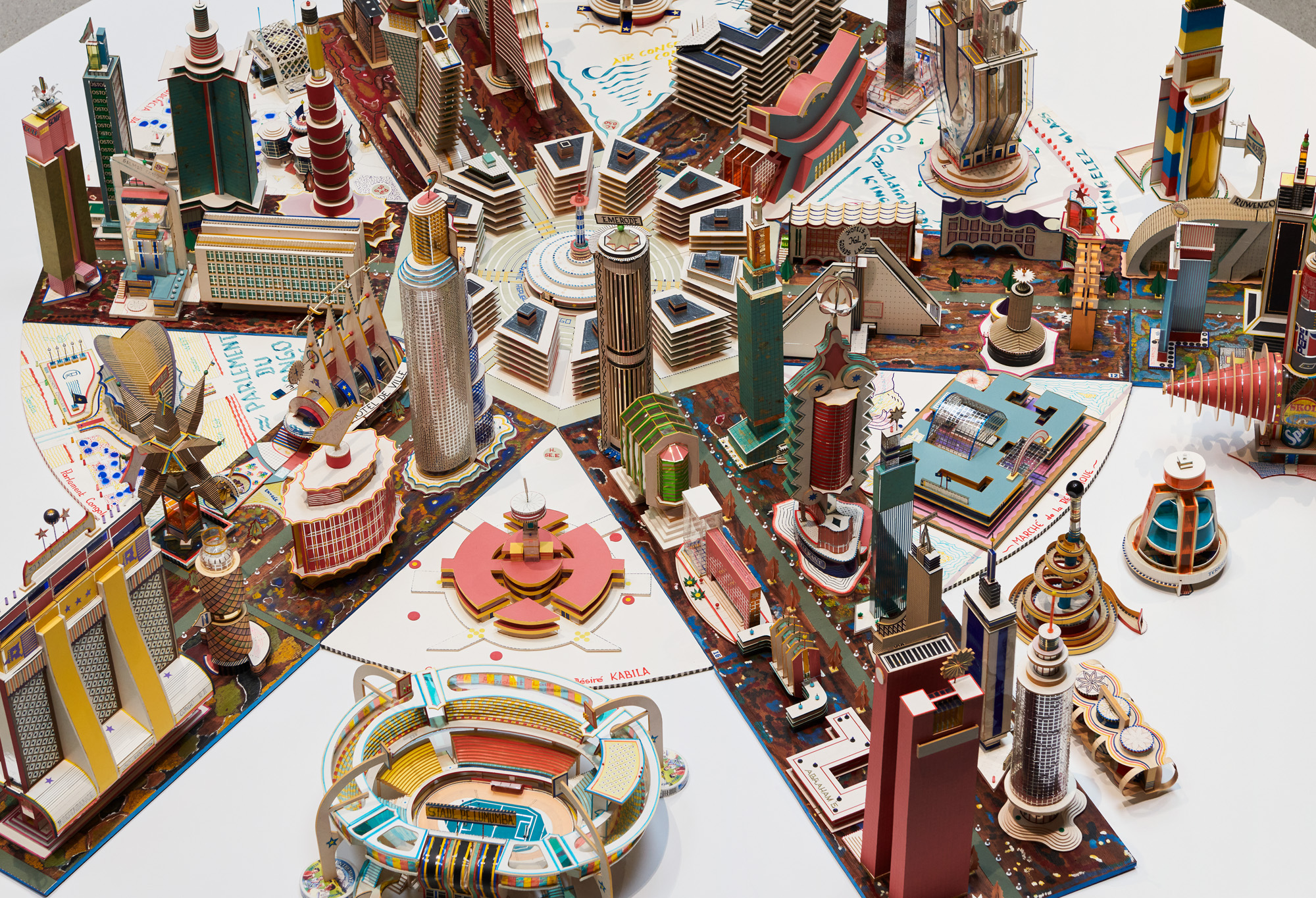 ‘You have to be courageous and experimental’: inside Fondation Cartier’s new home
‘You have to be courageous and experimental’: inside Fondation Cartier’s new homeFondation Cartier pour l'art contemporain in Paris invites us into its new home, a movable feast expertly designed by Jean Nouvel
-
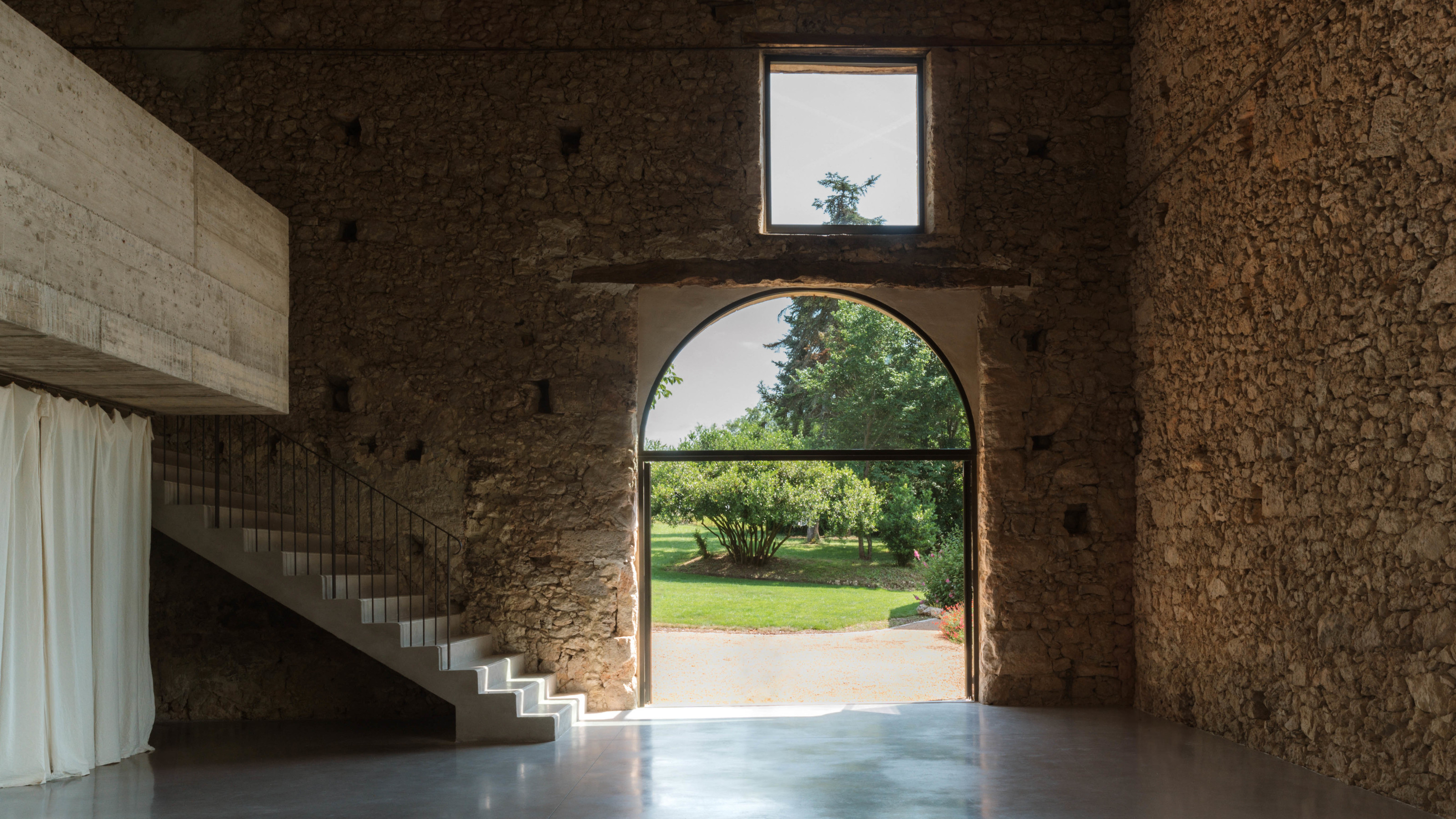 A wellness retreat in south-west France blends rural charm with contemporary concrete
A wellness retreat in south-west France blends rural charm with contemporary concreteBindloss Dawes has completed the Amassa Retreat in Gascony, restoring and upgrading an ancient barn with sensitive modern updates to create a serene yoga studio
-
 Three lesser-known Danish modernist houses track the country’s 20th-century architecture
Three lesser-known Danish modernist houses track the country’s 20th-century architectureWe visit three Danish modernist houses with writer, curator and architecture historian Adam Štěch, a delve into lower-profile examples of the country’s rich 20th-century legacy
-
 The Architecture Edit: Wallpaper’s houses of the month
The Architecture Edit: Wallpaper’s houses of the monthThis September, Wallpaper highlighted a striking mix of architecture – from iconic modernist homes newly up for sale to the dramatic transformation of a crumbling Scottish cottage. These are the projects that caught our eye